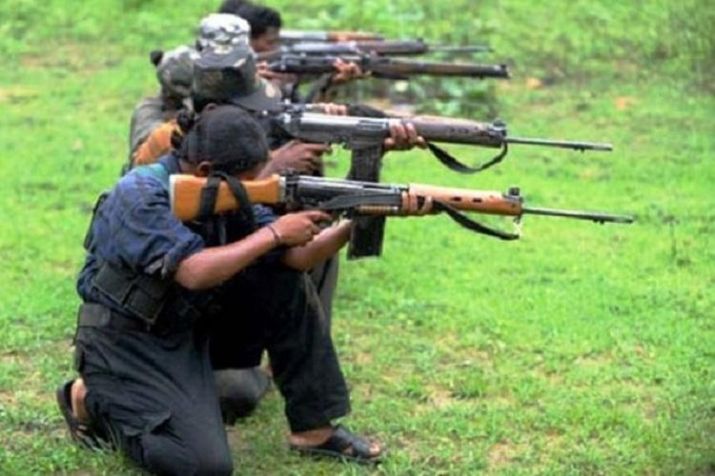
Why South’s red corridor has more Naxal cadre from Tamil Nadu

Ever since Maoists were sighted in the forests of Western Ghats adjoining the three southern states of Tamil Nadu, Kerala and Karnataka, the police departments of Tamil Nadu and Kerala have been passing the buck on each other for the Maoist activities in the area. However, the recent encounter of four Maoists, all residents of Tamil Nadu, by Kerala police in the Mel Manjukandi area of Attapadi in Palakkad district has revealed the presence of more Tamil cadres among Maoists in the tri-state forest region.
In an encounter on October 28 and 29, Kerala police’s anti-terror commando force, Thunderbolt, gunned down four Maoists – Manivasakam, Karthi, Aravind and Rema – at Manjikkandi near Agali in Kerala’s Palakkad district. A few days later the Tamil Nadu police arrested Deepak, a member of the Dandakaranya Special Zonal Committee of the CPI (Maoist) from Moolangangal, near the Kerala border.
Since 2016, Thunderbolt has eliminated six Maoists in separate encounters. Of them, five hailed from Tamil Nadu and had joined the People’s Liberation Guerrilla Army of the Communist Party of India (Maoist). With the recent encounters, the Tamil Nadu’s Q Branch of police, an intelligence wing that keeps track of the ultra-Left, has also confirmed that most of the Maoists camping in the tri-junction region are ultra-Left people from Tamil Nadu and not from Kerala.
Speaking to The Federal, a senior official in the Q branch said, “Even we did not know these people were there in the tri-junction region. We were only aware of the presence of a few people including slain Maoist leaders Kuppu Devaraj and Manivasakam in the area. But the recent encounters came as a shock. We had no idea that Karthi, Aravind and Rema have joined the movement,” he said.
Also read | The ‘left has turned against the left’ in Kerala encounter killings
He says the prominence of the Left in Kerala was a reason for the Tamil Nadu police to believe that the state contributed to the Maoist count in the tri-junction forest.
“Kerala is the first state to form a Left democratic government in the country. Also, Roopesh and his wife PA Shyna, the arrested leaders of the Maoist party were from Kerala,” the senior official added.
Tamil Nadu’s Naxal Special Division police attribute the prominent presence of Tamil Maoists in the region to the prevalence of a Dravidian outfit, founded by Periyar EV Ramasamy, in the state. The outfit was known for introducing the people to Tamil nationalist ideologies and sensitise them against caste-based discrimination.
“In Tamil Nadu, most of the people who were initially attracted towards the Dravidian outfit were later inspired by the armed struggle of the Tamils in Sri Lanka. Most of the people who are now in the People’s Liberation Guerrilla Army were originally trained to join the Sri Lankan civil war,” the senior official said.
While the residents of coastal districts of Tamil Nadu moved to Sri Lanka to join the Liberation Tigers of Tamil Eelam (LTTE), those in the other districts joined the Naxal movement that gained momentum in the late 1960s in Tamil Nadu, the official added.
J Vivek, a former Maoist, says they all were first inspired by the armed struggle of the Tamils in Sri Lanka, but later thought it fit to focus on the problems of the people in south India.
“Though we were inspired by the Sri Lankan Tamils’ armed struggle, we wanted to work for the people here. We came to know about the slain former Maoist leader Balan in Tamil Nadu. That’s how we all initially joined in the movement,” Vivek said.
However, alleged Maoist PA Shyna who was arrested in Coimbatore and is now out on bail, refuted the claims of Q Branch of police and said that there are an equal number of people from all the three states among Maoists in the tri-junction.
“The Left has played a prominent part in raising key issues, especially the case of class divide, in the state as they have been never a part of the government,” she said.
Writer IRA Murugavel, an ideological split within the Communist Party of India (Marxist) in 1968, caused many of CPM cadres to shift their allegiance to the extremist form of communism. Prominent CPI (M)leaders from Tamil Nadu to join the Naxal movement then were Arputhasamy, fondly called Appu, the first editor of Theekkathir, CPM’s mouthpiece; senior CITU leader AM Kothandaraman, and labour union leader from Coimbatore Kanna Kutty. The split even forced the CPI(M)to shift its party headquarters from Chennai to Madurai.
Also read | Armed with more power against terror, govt vows to crush ‘urban naxals’
“Since they were already the senior leaders of the party and knew how to address people and congregate them, a lot of cadres followed in their footsteps. Also, given the brutality of caste violence in the rural parts of Tamil Nadu before the 1990s, many youths from the state joined the armed struggle against the caste killings,” Murugavel says.
However, the repercussions of the split were not felt as much in Kerala as the state had initiated land reforms unlike Tamil Nadu. “Also, there was not much of a divide within the Kerala CPI(M) as only a handful of people including A Varghese, a district-level cadre of the party, joined the Naxal movement during the same period. So, Kerala had a fewer share of Maoists. This is like the north. Although the Naxal movement started in West Bengal, the movement is more active now in Bihar,” Murugavel adds.

